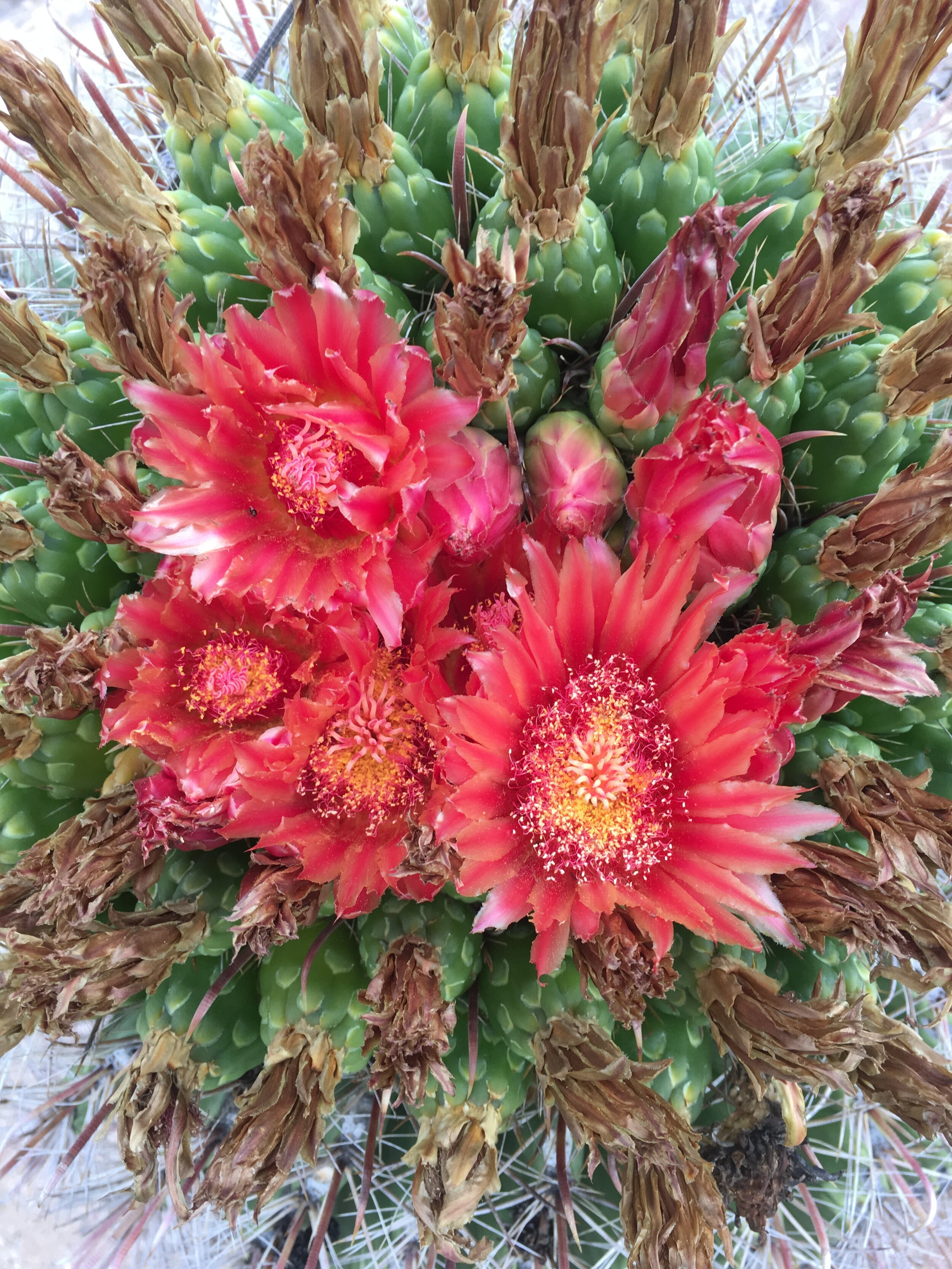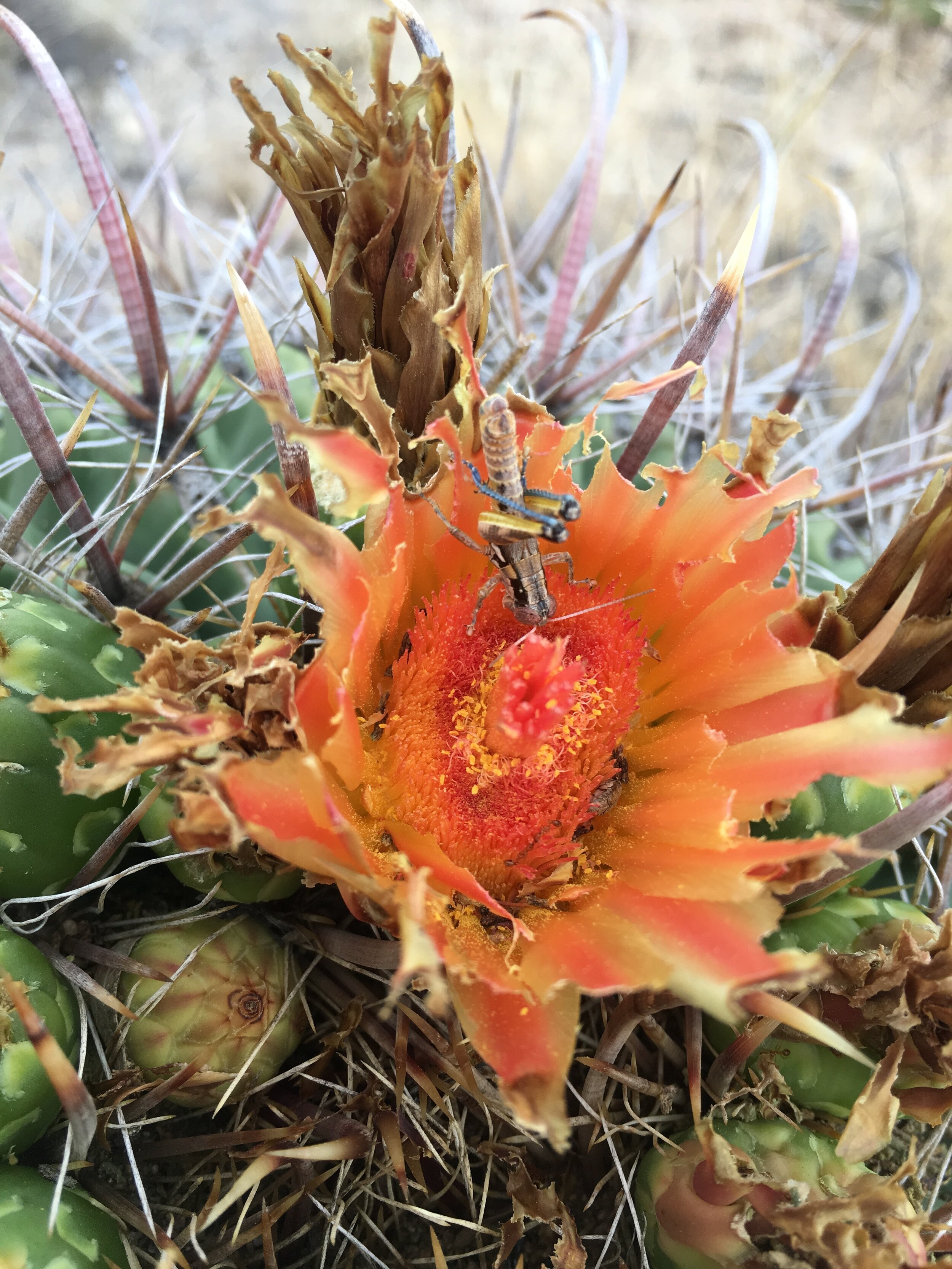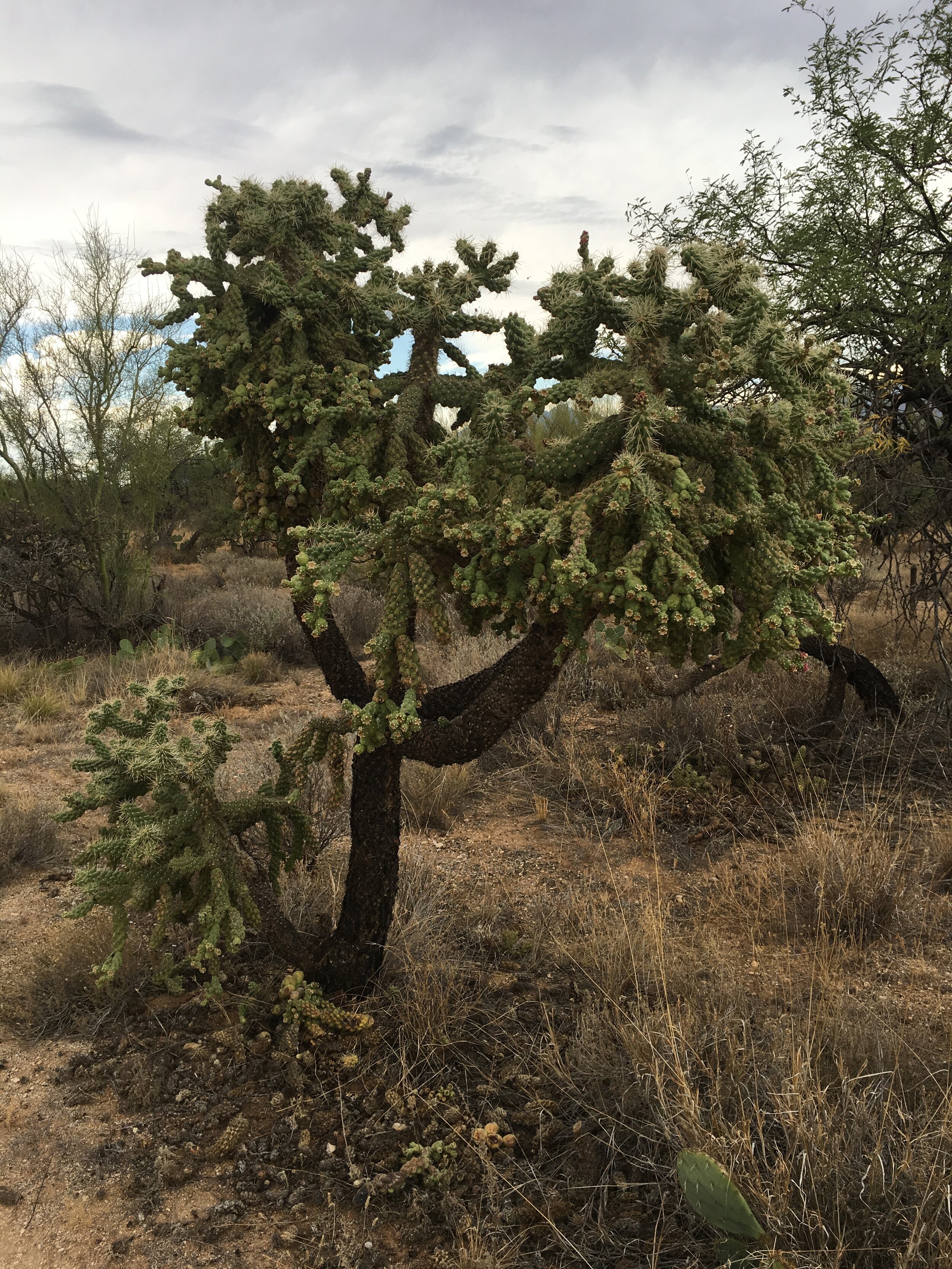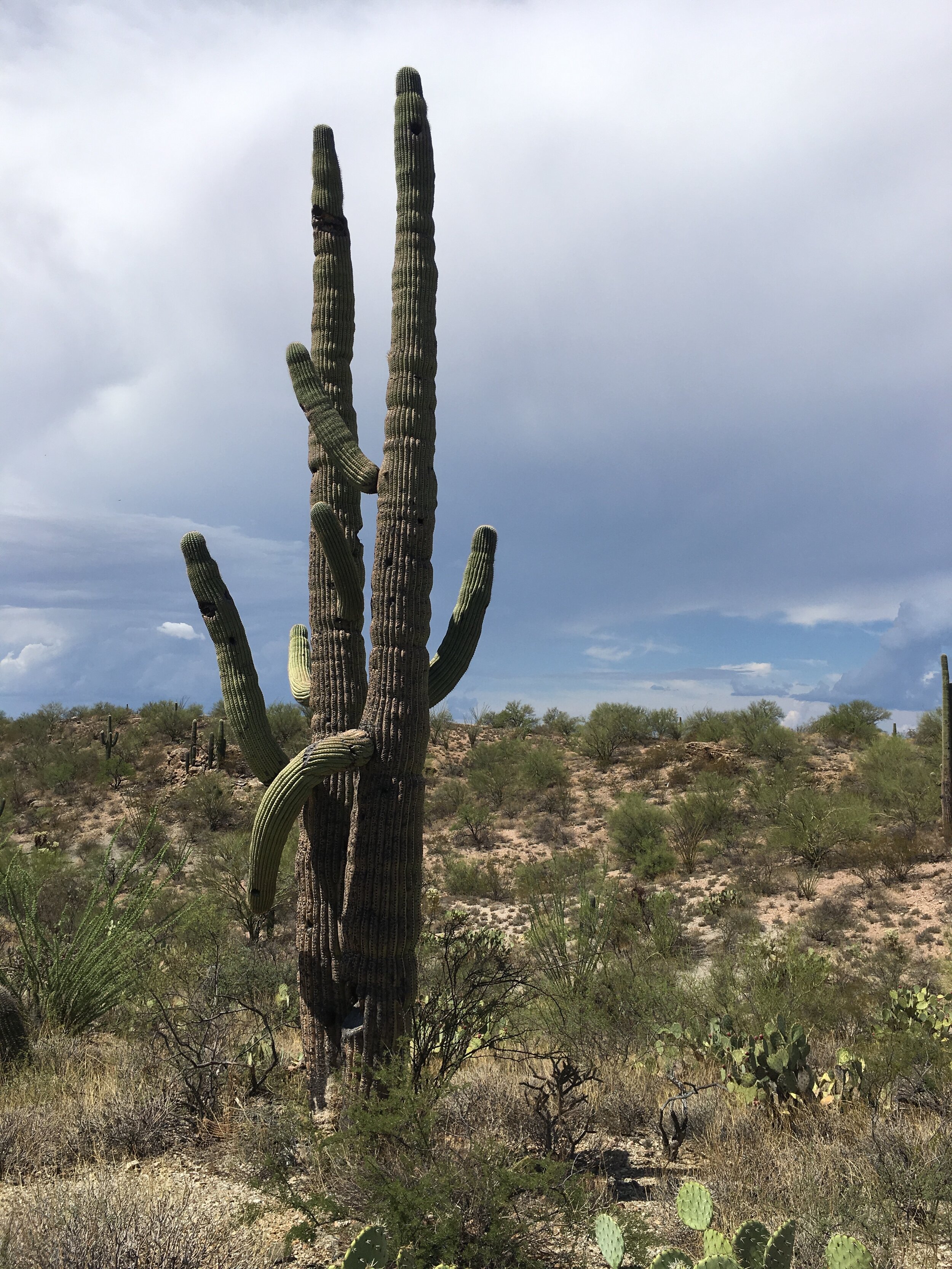Stop #23: Tucson, AZ
After a quick stop in Phoenix, I headed south to Tucson, where Steve and Jenna live. Before I saw them that evening, I visited Saguaro National Park, a park made up of two sections, one on the west side of Tucson and one on the east.
Saguaros (pronounced suh-waa-row) are the largest cacti in the US, growing up to around 40 feet. It takes them 75 years or more to even start growing an arm! I joined a volunteer Ranger-led program in the East section of the park, where we walked down an easy trail and he told us about plants specific to the area. I tried not to melt under the hot sun. Although Tucson was slightly cooler than Phoenix, the high was about 97 that day. We learned about the Palo Verde tree, the JoJoba plant, and of course, the amazing Saguaro. We saw baby Saguaros that were about 20 years old and only a few inches tall!
Just as the talk was ending, clouds rolled over the sun. Whew, some relief from the sun. I could see a storm off in the distance but it didn’t seem to be heading this way. This part of the park near the visitor center has a nice 8 mile scenic loop drive. I took this road and stopped about halfway through for a short hike. Our ranger had told us it had rained the night before and you could feel the humidity still. It seemed like a lot of the bugs were out and about, bees buzzed at barrel cactus flowers and ants where everywhere on the trail. I spotted a couple Cactus Wrens and heard them calling.
I finished up my hike and headed back to the car to finish the loop drive. Along the drive, I saw two roadrunners! They were very fast. A mule deer strolled across the road. I loved seeing all the animals and bugs! Back at the visitor center, I asked the staff about a large, fuzzy bug I saw. They identified it as a Velvet Ant, it looks like an ant, but is actually a wingless, female wasp. It’s other name is Cow Killer ant, because its sting is very painful, although I don’t think it can actually kill a cow or human. The female wasp looks for bees nests to lay her eggs in the larvae where her eggs will hatch earlier than the bees and then they eat the bee larvae. Yikes!






